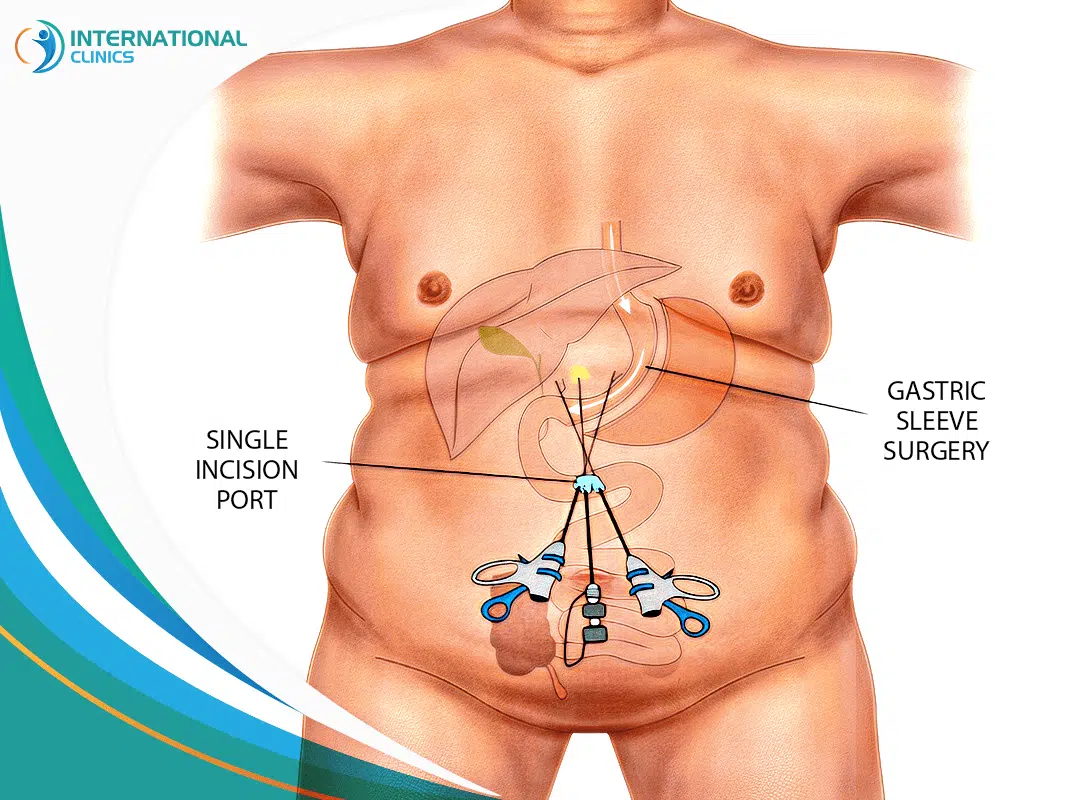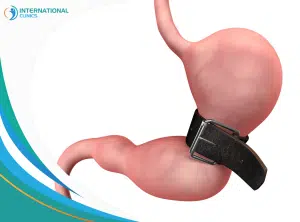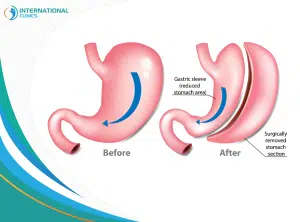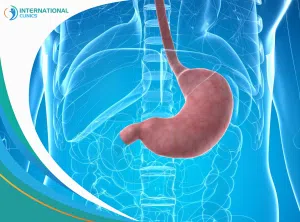Gastric sleeve surgery has emerged as a highly sought-after bariatric procedure due to its minimally invasive nature, but not all gastric sleeve procedures are created Equal. Single incision gastric sleeve surgery is a relatively new type that more and more people are considering.
The procedure offers a comprehensive approach to weight loss, just like the conventional laparoscopic sleeve gastrectomy, which is the most common approach for gastric sleeve in Turkey.
This approach to weight loss works by reducing the volume of food you can consume and controlling your appetite.
According to a study, single incision gastric sleeve has demonstrated a high level of efficacy in promoting substantial weight loss within the initial 6 months after surgery, comparable to that of the traditional multiport sleeve gastrectomy. It’s a safe and feasible procedure that doesn’t require any significant modifications to the existing surgical principles.
What Is Single Incision Gastric Sleeve?
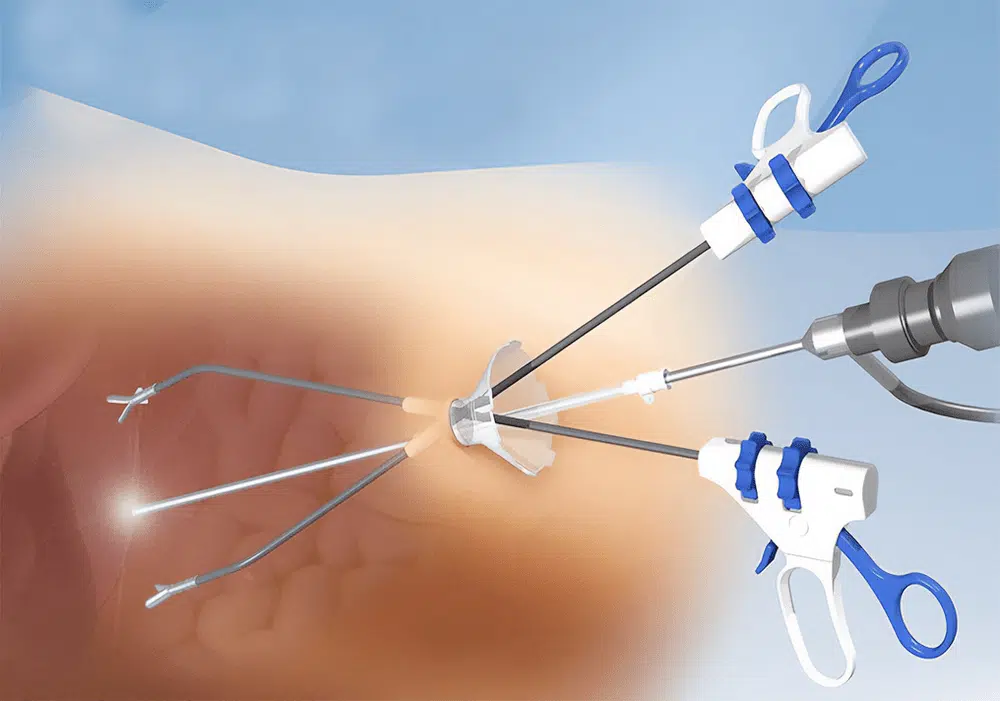
Single-incision laparoscopic surgery (SILS) is a highly sought-after bariatric procedure an innovative surgical technique that has revolutionized the field of bariatric surgery. The procedure has become an increasingly popular surgical treatment for individuals with morbid obesity.
With this technique, bariatric surgeons can perform a gastric sleeve using only one incision, which results in a nearly scarless procedure. The procedure involves creating only one scar in the belly button area, which is an appealing option for some patients.
However, this surgery isn’t always the best option for everyone. The surgery relies on a minimally invasive technique and entails removing up to 80% of the patient’s stomach, ensuring a long-lasting resolution for effective weight loss.
Due to the exceptional cosmetic results and shorter recovery time, SILS has become one of the most requested types of gastric sleeve surgery in Turkey. This technique is aesthetically pleasing and offers many other benefits such as reduced scarring, decreased pain, and faster recovery time.
Single Incision Gastric Sleeve vs Laparoscopic Gastric Sleeve
Laparoscopic Gastric Sleeve
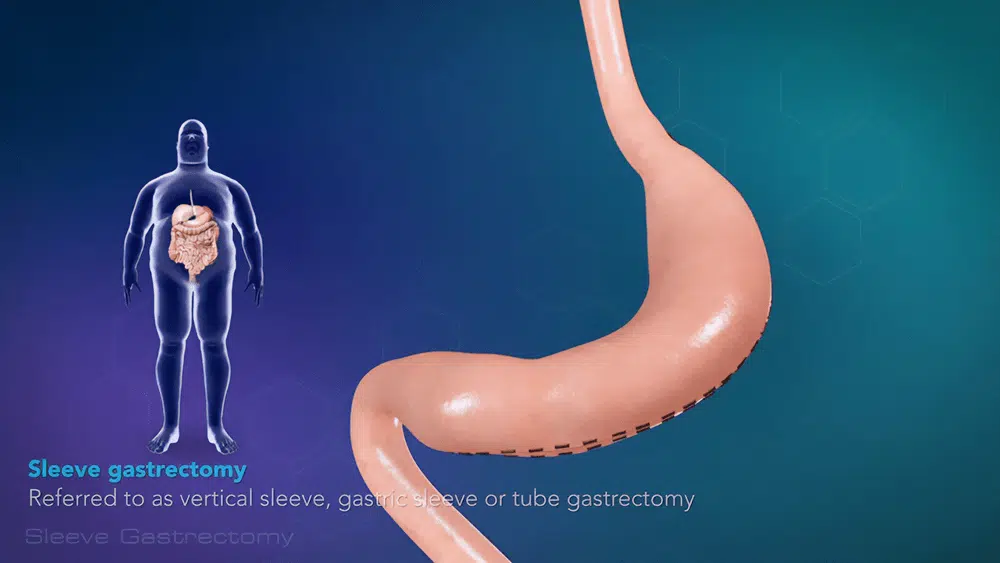
Laparoscopic gastric sleeve, also known as the traditional gastric sleeve or vertical sleeve gastrectomy, isn’t the same as single incision gastric sleeve but they eventually aim at the same thing.
The laparoscopic gastric sleeve is a minimally invasive procedure that involves inserting laparoscopic instruments into the abdominal cavity through three to five small incisions.
One of these instruments, the trocar, is used to reduce the stomach size by almost 80%. The stomach is then sealed using staples and the abdominal incisions are carefully closed off.
Single Incision Gastric Sleeve
Single incision laparoscopic surgery (SILS) uses a different approach. Instead of multiple incisions, only one small incision is made, and all the required instruments are inserted and used to remove 80% of the stomach size.
This leads to the creation of only one scar near the patient’s belly button, which gradually fades away and becomes almost unnoticed within six to twelve months.
Furthermore, the recovery time is usually much quicker compared to traditional laparoscopic surgery, and patients tend to experience less post-operative pain.
Another significant benefit of this approach is a reduced risk of wound site infection and hernias, both of which are potential complications of laparoscopic surgery. This is because there is only one entry point, and therefore, the chances of contamination and infection are significantly lower.
This scarless gastric sleeve option has been gaining popularity among many patients, especially those with a BMI below 40.
However, not all patients are suitable candidates for this surgery, and it cannot be a revision surgery after the initial gastric sleeve.
Benefits of Single Incision Gastric Sleeve
Single incision laparoscopic surgery has a proven track record for producing excellent weight loss outcomes and other benefits:
- Produces minimal postoperative discomfort with less visible scarring
- Lower the production of ghrelin, a hormone responsible for hunger
- Improve several metabolic functions in the body and can enhance the body’s ability to regulate blood sugar levels
- Safe and reliable, with far fewer side effects when compared to gastric bypass surgery
Candidates for Single Incision Gastric Sleeve
As mentioned before, not all individuals are eligible for single incision gastric sleeve surgery. Your surgeon must determine whether you meet the requirements before scheduling the procedure. The key factors to ascertain your candidacy for the surgery include:
- Must be above the age of 18
- Your BMI must not exceed 35
- You shouldn’t have had any previous abdominal surgeries
- Your excess body fat must not be focused on your central abdomen
- You must have a positive attitude toward food, exercise, and overall health.
Given these details, only a qualified medical professional can evaluate your specific case and advise on the most appropriate course of action.
Gain knowledge about: gastric sleeve 10 years later
The Procedure of Single Incision Gastric Sleeve
Your surgeon will evaluate your medical history and suggest the most appropriate treatment options based on the physical examination to ensure optimal outcomes and successful recovery. The steps of the procedure include:
Anesthesia
Before the procedure, your surgeon will give you general anesthesia to keep you asleep and prevent feeling any pain during the surgery.
Making the Incision
Your surgeon will make just one small incision in the abdomen and insert a tiny camera known as a laparoscope to provide visibility inside the abdomen. The entire procedure should take between 30 to 60 minutes to complete.
Cut Off a Part of the Stomach
A portion of your stomach will be removed, and the remaining section will be shaped into a tube or elongated banana and sutured into place.
After the surgery, most patients can return home and resume their usual activities within one or two days. To fully recover, most people typically take a week off from work. Patients will start with a liquid or soft food diet for 2-3 weeks after surgery without cheating, and then gradually move to soft and regular food. Around six weeks after the procedure, most patients can resume their regular diet.
Risks of Single Incision Gastric Sleeve

Although the procedure is known for its potential advantages of reduced scarring and faster recovery time, it also has some downsides and challenges. For instance, a single incision laparoscopic sleeve (SILS) is more difficult to perform compared with a traditional gastric sleeve due to the excessive amount of visceral and subcutaneous fat in the abdomen according to a study.
However, the procedure carries a lower risk than traditional gastric sleeve and gastric bypass surgery because it requires only a small incision, which significantly lowers the risk of complications that can arise from multiple incisions.
For example, the likelihood of dumping syndrome, a condition where food moves too fast from the stomach to the bowels, is notably less with SILS than with traditional gastric sleeve and bypass surgeries. Furthermore, SILS reduces the risk of vitamin deficiencies, which are relatively common with traditional bariatric procedures.
When it comes to cost, gastric sleeve cost in Turkey is generally lower than in other countries, and that applies to most types of obesity surgery in Turkey.
The Bottom Line
Single incision laparoscopic sleeve is a unique, less invasive bariatric procedure that has the potential to grow popular as days go by. It yields the benefits of traditional gastric sleeve and leads to fewer risks and complications, but not all doctors can perform this procedure.
International Clinics in Turkey provides different types of bariatric procedures including gastric sleeve, BariClip, and others. The clinics realize that every individual’s case is unique, and requires personalized care and attention from a qualified medical professional.
We are committed to providing our patients with the highest level of care possible, ensuring that they have the best possible outcome and successful recovery. You can contact us right away using the Contact Us button below.
Frequently Asked Questions (FAQ)
Is Single Incision Gastric Sleeve Safe?
The single incision gastric sleeve is a safe, effective, and highly efficient technique. To ensure optimal safety, you must choose a clinic that offers this procedure on regular bases. Although the number of clinics that offer this technique is relatively small, you still can find different clinics that offer it in Turkey and other selected countries.
How Many Incisions Do You Get with a Gastric Sleeve?
The traditional laparoscopic gastric sleeve requires the creation of 5-6 small incisions in the abdomen. This enables the surgeons to use a video camera (laparoscope) and other instruments for better visualization and access to the surgical site.
What Does Single Incision Bariatric Surgery Mean?
The single incision bariatric surgery is a less-invasive technique to reduce the size of the stomach. Unlike traditional bariatric procedures that require multiple incisions, this new technique only requires a single small incision in the navel area.
Is Gastric Sleeve a High Risk Surgery?
The gastric sleeve procedure is a bariatric surgery that involves the removal of a large portion of a vital organ, making it somewhat risky. As with any surgery, there are potential risks and complications. Therefore, it’s important to pay attention to its pros and cons.
What Is the Difference Between Gastric Sleeve and Single Incision Gastric Sleeve?
Both the traditional and single incision approaches to gastric sleeve intend to reach the same goal. The primary difference between the two approaches lies in the number of access points during the surgery. The single incision technique involves the use of one single entry point, while the traditional gastric sleeve relies on multiple entry points around the belly button region.
What Is the Most Minimally Invasive Bariatric Surgery?
The most minimally invasive bariatric surgery is the BariClip, followed by the Lap band surgery. These procedures are the least invasive and least complex among the weight loss surgical procedures. This results in faster recovery times, reduced risk of complications, and shorter hospital stays.
Which Bariatric Surgery Has the Fastest Recovery Time?
The bariatric surgery that has the fastest recovery time is BariClip. Next comes the lap band procedure. Most patients can resume work duties within just one week of these procedures.
Read more: Obesity surgeries cost in Turkey
